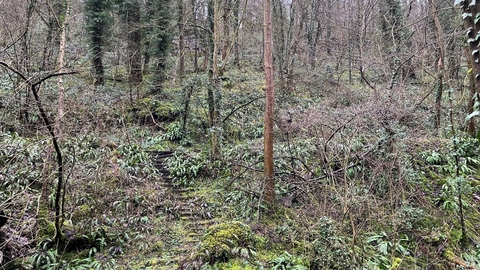
Slinter Woods & Dunsley Meadows
Location
Know before you go
Dogs
Well-behaved dogs are welcome and should be kept on a lead where livestock are on site and during bird nesting season.
When to visit
Opening times
Open 24/7Best time to visit
Spring/SummerAbout the reserve
Slinter Woods and Dunsley Meadows form part of our Derwent Valley living landscape. Slinter Woods is a steep-sided limestone dale, with a mix of grassland, scrub and woodland. The woodland is typical of limestone dales and is a beautiful mix of ash, elm, and hazel trees, with a rich flowering woodland floor. Typically of undisturbed limestone dales, it has a population of native large-leafed lime, an ancient woodland indicator.
The wider landscape is a mosaic of woodland, scrub, bare ground and grassland habitats. This diverse mix supports at least twelve nationally notable flowering plant species, with many others which are locally uncommon. It also has an excellent range of invertebrates, many of which are nationally notable species. The disused mines and caverns through the woodland also include places where at least four bat species hibernate.
Next to Slinter Woods, Dunsley Meadows is a mix of species-rich pastures and meadows, with mixed hedgerows between.
As spring gives way to summer, the woodland edge and hedgerows burst with wildflowers while the meadows showcase a stunning array of colours.
This site, adjacent to it and connected by footpaths, also shares a boundary with our Rose End Meadows site.

